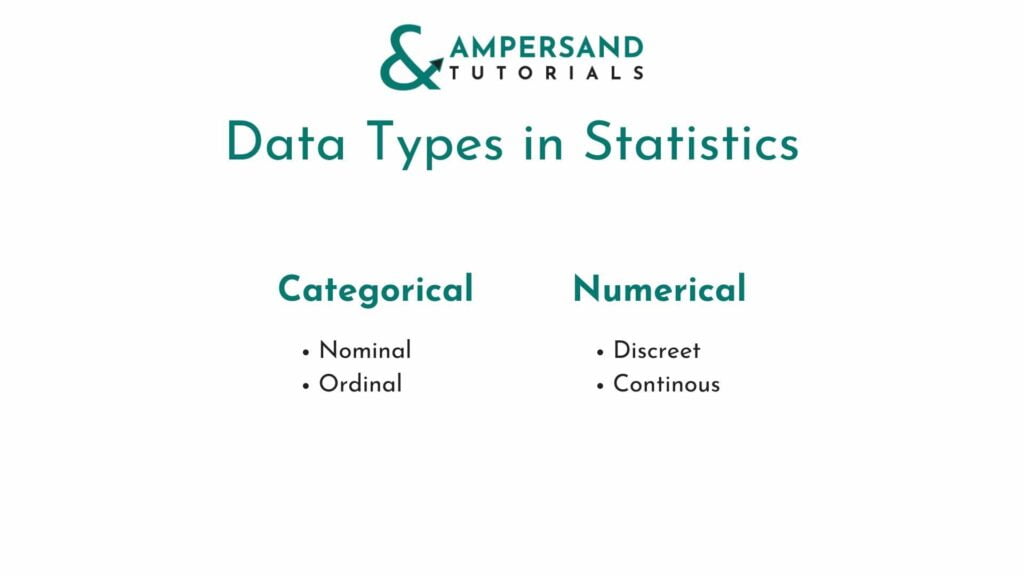Learn about Data Types in Statistics
In general, data types in statistics are a group of individual data points. Statistics consists of two main types of Data.
- Categorical Data Types
- Numerical Data Types
In this section, we will be discussing each of the Data Types with the example from Cricket since I watch cricket the most and its kinds of intriguing for me. We will explain in detail below about each of the data types
Categorical Data:
Categorical data is a data type stored as groups or categories with the help of names or labels. There are two types of Categorical Data Type
Nominal: Datatypes with no proper order
Ordinal: Datatypes with proper order
Numerical Data:
Numerical data is a data type that represents values that are measured and put into a logical order. There are two types of Numerical Data Type
Discrete: Discrete Data types are the ones that take only certain values. Discrete Data Types cannot be measured but it can be counted
Continuous: Continuous Data types are the ones that are measured and hence it cannot be counted.

Examples of each Data Type:
Categorical – Nominal Data Type:
Which team does “Virat Kohli” play?
{India, Pakistan, Bangladesh, Sri Lanka}
Data inside the parenthesis is called Sample Space
Categorical – Ordinal Data Type:
Which position does “Virat Kohli” bat?
{1 down, 2 down, 3 down, 4 down}
Numerical – Discrete Data Type:
How many runs did “Virat Kohli” score in World Cup?
{150, 250, 350, 450}
Numerical – Continuous Data Type:
What is the height of “Virat Kohli”?
{5.5, 5.6, 5.7, 5.8}
Now that you have learnt the data types of basics in statistics we will discuss Distribution, Sampling & Estimation, Hypothesis Testing and P values in statistics. If you’re looking to enrol for Data Analytics Course, check the R Programming course from our institute. Also, read about the Installation of SAS University Edition.
